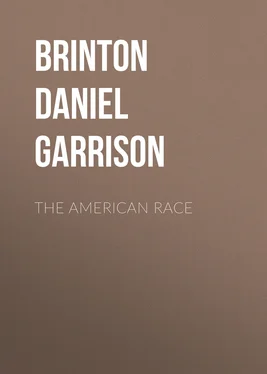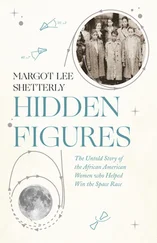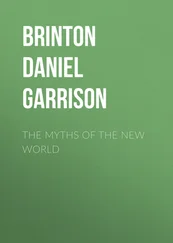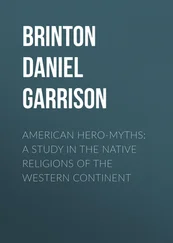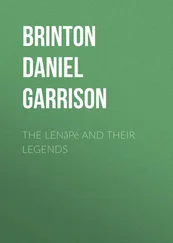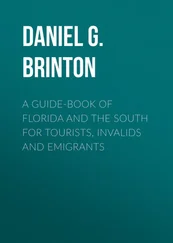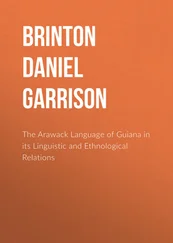Daniel Brinton - The American Race
Здесь есть возможность читать онлайн «Daniel Brinton - The American Race» — ознакомительный отрывок электронной книги совершенно бесплатно, а после прочтения отрывка купить полную версию. В некоторых случаях можно слушать аудио, скачать через торрент в формате fb2 и присутствует краткое содержание. Жанр: foreign_antique, История, История, foreign_edu, на английском языке. Описание произведения, (предисловие) а так же отзывы посетителей доступны на портале библиотеки ЛибКат.
- Название:The American Race
- Автор:
- Жанр:
- Год:неизвестен
- ISBN:нет данных
- Рейтинг книги:4 / 5. Голосов: 1
-
Избранное:Добавить в избранное
- Отзывы:
-
Ваша оценка:
- 80
- 1
- 2
- 3
- 4
- 5
The American Race: краткое содержание, описание и аннотация
Предлагаем к чтению аннотацию, описание, краткое содержание или предисловие (зависит от того, что написал сам автор книги «The American Race»). Если вы не нашли необходимую информацию о книге — напишите в комментариях, мы постараемся отыскать её.
The American Race — читать онлайн ознакомительный отрывок
Ниже представлен текст книги, разбитый по страницам. Система сохранения места последней прочитанной страницы, позволяет с удобством читать онлайн бесплатно книгу «The American Race», без необходимости каждый раз заново искать на чём Вы остановились. Поставьте закладку, и сможете в любой момент перейти на страницу, на которой закончили чтение.
Интервал:
Закладка:
These facts, taken in connection with the geologic events I have already described, would lead us to place the “area of characterization” of the native American east of the Rocky Mountains, and between the receding wall of the continental ice sheet and the Gulf of Mexico. There it was that the primitive glacial man underwent those changes which resulted in the formation of an independent race.
We have evidence that this change took place at a very remote epoch. The Swiss anatomist, Dr. J. Kollmann, has published a critical investigation of the most ancient skulls discovered in America, as the one I have already referred to from Calaveras county, California, one from Rock Bluff, Illinois, one from Pontimelo, Buenos Ayres, and others from the caverns of Lagoa Santa, Brazil, and from the loess of the Pampas. All these are credited with an antiquity going back nearly to the close of the last glacial period, and are the oldest yet found on the continent. They prove to be strictly analogous to those of the Indians of the present day. They reveal the same discrepancy in form which we now encounter in the crania of all American tribes. The Calaveras skull and that from Pontimelo are brachycephalic; those from Lagoa Santa dolichocephalic; but both possess the wide malar arches, the low orbital indices, the medium nasal apertures and the general broad faces of the present population. Dr. Kollmann, therefore, reaches the conclusion that “the variety of man in America at the close of the glacial period had the same facial form as the Indian of to-day, and the racial traits which distinguish him now, did also at that time.”
The marked diversity in cranial forms here indicated is recognizable in all parts of the continent. It has frustrated every attempt to classify the existing tribes, or to trace former lines of migration, by grouping together similar head-measurements. This was fully acknowledged by the late Dr. James Aitken Meigs, of Philadelphia, who, taking the same collection of skulls, showed how erroneous were the previous statements of Dr. Morton in his Crania Americana . The recent studies of Virchow on American crania have attained the same conclusion. 34 34 See J. Kollmann, Zeitschrift für Ethnologie , 1884, s. 181 sq. The conclusion of Virchow is “que les caracteres physionomiques des têtes Américaines montrent une divergence si manifeste qu’on doit renoncer definitivement à la construction d’un type universel et commun des Indigènes Américains.” Congrès des Américanistes , 1888, p. 260. This is substantially the conclusion at which Dr. James Aitken Meigs arrived, in his “Observations on the Cranial Forms of the American Aborigines,” in Proc. of the Acad. Nat. Sci. of Phila. , 1866.
We must dismiss as wholly untenable the contrary arguments of the French and other craniologists, and still more peremptorily those attempted identifications of American skulls with “Mongolian” or “Mongoloid” types. Such comparisons are based on local peculiarities which have no racial value.
Yet it must not be supposed from this that carefully conducted cranial comparisons between tribes and families are valueless; on the contrary, the shape and size of the skull, the proportion of the face, and many other measurements, are in the average highly distinctive family traits, and I shall frequently call attention to them.
The lowest cephalic index which I have seen reported from an American skull is 56, which is that of a perforated skull from Devil river, Michigan, now in the medical museum at Ann Arbor university; 35 35 Henry Gilman, Report of the Smithsonian Institution for 1885 , p. 239. Other perforated skulls from similar graves in the same locality showed indices of, 82, 83, 85.
the highest is 97, from a Peruvian skull, though probably this was the result of an artificial deformity.
It is not necessary to conclude from these or other diversities in skull forms that the American race is a conglomerate of other and varied stocks. As I have pointed out elsewhere, the shape of the skull is not a fixed element in human anatomy, and children of the same mother may differ in this respect. 36 36 D. G. Brinton, Races and Peoples; Lectures on the Science of Ethnography , p. 20. (David McKay, Philadelphia.)
A special feature in American skulls is the presence of the epactal bone, or os Incæ , in the occiput. It is found in a complete or incomplete condition in 3.86 per cent. of the skulls throughout the continent, and in particular localities much more frequently; among the ancient Peruvians for example in 6.08 per cent., and among the former inhabitants of the Gila valley in 6.81 per cent. This is far more frequently than in other races, the highest being the negro, which offers 2.65 per cent., while the Europeans yield but 1.19. 37 37 Dr. Washington Matthews, in the American Anthropologist , 1889, p. 337.
The presence of the bone is due to a persistence of the transverse occipital suture, which is usually closed in fetal life. Hence it is a sign of arrested development, and indicative of an inferior race.
The majority of the Americans have a tendency to meso- or brachycephaly, but in certain families, as the Eskimos in the extreme north and the Tapuyas in Brazil, the skulls are usually decidedly long. In other instances there is a remarkable difference in members of the same tribe and even of the same household. Thus among the Yumas there are some with as low an index as 68, while the majority are above 80, and among the dolichocephalic Eskimos we occasionally find an almost globular skull. So far as can be learned, these variations appear in persons of pure blood. Often the crania differ in no wise from those of the European. Dr. Hensell, for instance, says that the skulls of pure-blood Coroados of Brazil, which he examined, corresponded in all points to those of the average German. 38 38 Zeitschrift für Ethnologie , Bd. II., s. 195.
The average cubical capacity of the American skull falls below that of the white, and rises above that of the black race. Taking both sexes, the Parisians of to-day have a cranial capacity of 1448 cubic centimetres; the Negroes 1344 c. c.; the American Indians 1376. 39 39 Cf. Lucien Carr, in the Eleventh Annual Report of the Peabody Museum , p. 367.
But single examples of Indian skulls have yielded the extraordinary capacity of 1747, 1825, and even 1920 cub. cent. which are not exceeded in any other race. 40 40 Lucien Carr, “Notes on the Crania of New England Indians,” in the Anniversary Memoirs of the Boston Society of Natural History , 1880; and compare Topinard, Elements d’Anthropologie Générale , p. 628. (Paris, 1885.)
The hue of the skin is generally said to be reddish, or coppery, or cinnamon color, or burnt coffee color. It is brown of various shades, with an undertone of red. Individuals or tribes vary from the prevailing hue, but not with reference to climate. The Kolosch of the northwest coast are very light colored; but not more so than the Yurucares of the Bolivian Andes. The darkest are far from black, and the lightest by no means white.
The hair is rarely wholly black, as when examined by reflected light it will also show a faint undercolor of red. This reddish tinge is very perceptible in some tribes, and especially in children. Generally straight and coarse, instances are not wanting where it is fine and silky, and even slightly wavy or curly. Although often compared to that of the Chinese, the resemblances are superficial, as when critically examined, “the hair of the American Indian differs in nearly every particular from that of the Mongolians of eastern Asia.” 41 41 H. Fritsch, in Compte-Rendu du Congrès des Américanistes , 1888, p. 276.
The growth is thick and strong on the head, scanty on the body and on the face; but beards of respectable length are not wholly unknown. 42 42 For instance, some of the Mixes of Mexico have full beards (Herrera, Decadas de las Indias , Dec. IV., Lib. IX., cap. VII.); the Guarayos of Bolivia wear long straight beards, covering both lips and cheeks (D’Orbigny, L’Homme Américain , Vol. I., p. 126); and the Cashibos of the upper Ucayali are bearded (Herndon, Exploration of the Valley of the Amazon , p. 209).
Интервал:
Закладка:
Похожие книги на «The American Race»
Представляем Вашему вниманию похожие книги на «The American Race» списком для выбора. Мы отобрали схожую по названию и смыслу литературу в надежде предоставить читателям больше вариантов отыскать новые, интересные, ещё непрочитанные произведения.
Обсуждение, отзывы о книге «The American Race» и просто собственные мнения читателей. Оставьте ваши комментарии, напишите, что Вы думаете о произведении, его смысле или главных героях. Укажите что конкретно понравилось, а что нет, и почему Вы так считаете.
